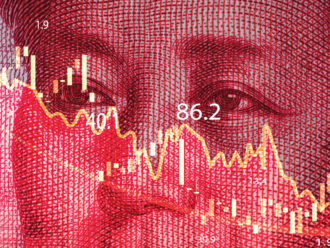According to Saker Nusseibeh, CEO of Hermes Investment Management, markets are not thinking carefully enough about the extent of Trump’s ability to push through change.
“He has both houses supporting him,” Nusseibeh says. “That puts him in a stronger position than many presidents have been in for a long time. He will be more able to push through his policies and I’m not sure if markets fully understand the consequences of that.”
FISCAL POLICY AND INFLATION
Trump’s infrastructure spending appears to make a lot of sense given the considerable need for America to both maintain existing infrastructure and build new projects. Figures from the Congressional Budget Office show real spending on transport and water infrastructure, for example, fell 9% between 1985 and 2014. The average age of transport and water infrastructure has also deteriorated markedly, increasing from an average of 19 years in 1960 to 26 years today. This trend has accelerated in the post-financial crisis era due to budget cuts.
The scope to spend on repairs and maintenance, as well as building new projects, creates a large number of ‘shovel-ready’ opportunities for Trump’s administration to deploy its planned $1trn on infrastructure over the next 10 years.
But there are two underlying problems with his plan. First, his ability to finance this kind of project through some form of public-private partnership is limited as investors are less interested in the types of assets this involves. Second, with the US economy at near-full employment (4.9%) and tens of thousands of jobs still unfilled in the construction industry, it is not clear the right people are in the right places when it comes to creating jobs for America’s disillusioned masses – Trump’s electoral base.
Three likely consequences arise from this strategy: increased pressure on wages (which will only be exacerbated if Trump also pushes through anti-immigration reforms as immigrants have traditionally made up a significant proportion of the infrastructure- based workforce), a marked increase in public debt and inflationary pressure.
Now consider the tax cuts. The US economy that Trump will inherit is in fairly good shape. Real economic growth has begun to pick up, S&P500 earnings have rebounded from their oil and dollar-fuelled lows of 2015 and inflation is still moderate.
“In 2010, that plan would have been fantastic,” says David Stubbs, global market strategist at JP Morgan Asset Management (JPMAM), “but it is the wrong time for major tax cuts today.”
Tax cuts would have a positive effect on consumption, further adding to inflationary pressure.
According to Pimco’s global economic adviser, Joachim Fels, although the Fed might initially welcome higher inflation and tolerate an overshoot of the target for some time, the Fed would eventually likely need to raise rates more aggressively than in a scenario without fiscal stimulus. This could “end in tears”, Fels says, as it may push the economy into recession in 2019 or 2020.
The likelihood of this outcome unfolding would be considerably higher if Trump deregulates the financial sector by gutting Dodd-Frank. “Whatever changes they make will make it easier and more attractive for banks to lend,” JPMAM’s Stubbs explains. “Credit growth is a key driver of inflation. At the moment inflation is perfectly manageable, but it could quickly go off the radar.”
BOND RIOT
The market has already spoken to some degree when it comes to the outlook for US inflation with $1trn wiped off the value of bonds in the first few days after the surprise election result became clear – an undoubtedly painful period for any investors holding long bond positions.
Christopher Wood, chief strategist at CLSA, expects the 10-year Treasury bond yield will “break out” and bond prices will move lower as part of what he called the “ongoing bond riot” in anticipation of Trump’s policies.
JPMAM’s Stubbs says: “Holding short- dated government paper seems to be a dangerous place to be.” He expects to see bear flattening over the next 12 months as short rates increase more than they do at the long end.



